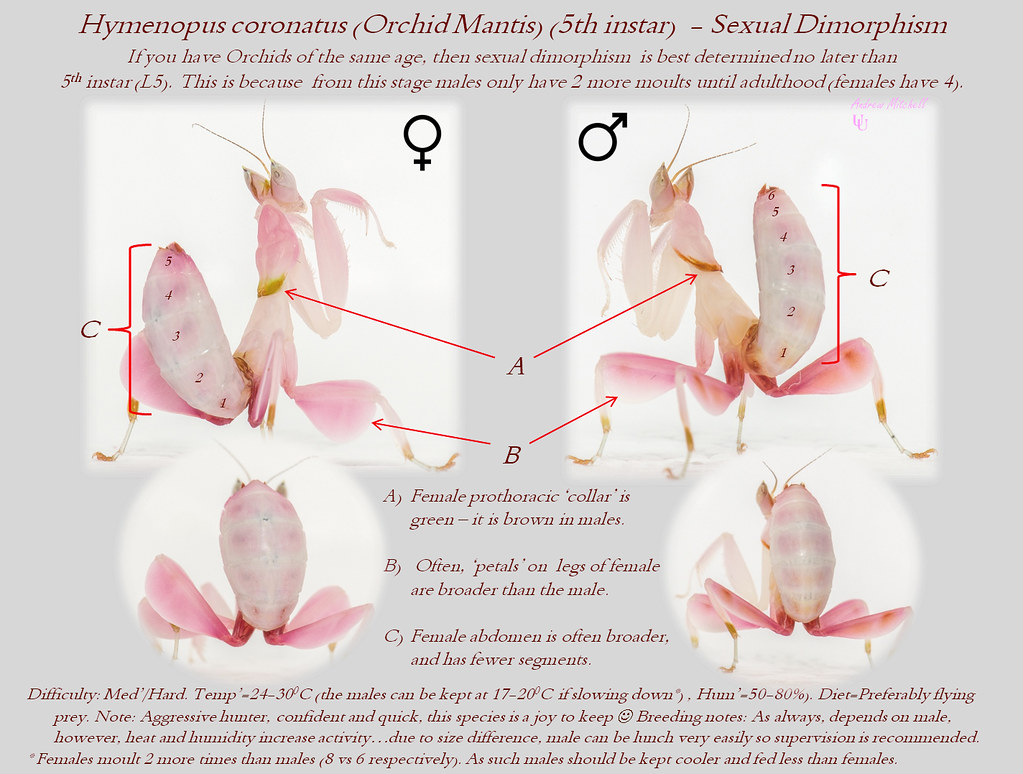Ebichua
Member
Looking for some advice from folks with orchid mantis experience
How accurate is it to identify their sex based off of their back color? As seen here (A).

I started off with 5 L2 mantids and I was counting abdomen nodes. I only counted 5 on all of them and assumed all were female. However, they're L4 now and their back colors are showing. Maybe segment counting was inaccurate due to how small and young they are.
How accurate is it to identify their sex based off of their back color? As seen here (A).

I started off with 5 L2 mantids and I was counting abdomen nodes. I only counted 5 on all of them and assumed all were female. However, they're L4 now and their back colors are showing. Maybe segment counting was inaccurate due to how small and young they are.



